Analytics of Finance
Data is displayed for academic year: 2023./2024.
Lecturers
Course Description
This course covers the main quantitative methods of finance. It covers three broad sets of topics: financial econometrics, statistical machine learning for financial applications and dynamic programing. This course gives a comprehensive introduction to financial economics, and particularly asset pricing. Provides the foundation for the main analytical techniques and quantitative methods necessary in the financial industry Examples of applications include portfolio optimization, risk management, and proprietary trading.
Study Programmes
University graduate
[FER3-HR] Audio Technologies and Electroacoustics - profile
Elective Courses
(1. semester)
(3. semester)
[FER3-HR] Communication and Space Technologies - profile
Elective Courses
(1. semester)
(3. semester)
[FER3-HR] Computational Modelling in Engineering - profile
Elective Courses
(1. semester)
(3. semester)
[FER3-HR] Computer Engineering - profile
Elective Courses
(1. semester)
(3. semester)
[FER3-HR] Computer Science - profile
Elective Courses
(1. semester)
(3. semester)
[FER3-HR] Control Systems and Robotics - profile
Elective Courses
(1. semester)
(3. semester)
[FER3-HR] Data Science - profile
Elective Courses
(3. semester)
Elective Courses of the Profile
(3. semester)
[FER3-HR] Electrical Power Engineering - profile
Elective Courses
(1. semester)
(3. semester)
[FER3-HR] Electric Machines, Drives and Automation - profile
Elective Courses
(1. semester)
(3. semester)
[FER3-HR] Electronic and Computer Engineering - profile
Elective Courses
(1. semester)
(3. semester)
[FER3-HR] Electronics - profile
Elective Courses
(1. semester)
(3. semester)
[FER3-HR] Information and Communication Engineering - profile
Elective Courses
(3. semester)
Elective Coursesof the Profile
(3. semester)
[FER3-HR] Network Science - profile
Elective Courses
(1. semester)
(3. semester)
[FER3-HR] Software Engineering and Information Systems - profile
Elective Courses
(1. semester)
(3. semester)
Learning Outcomes
- Define main notions in the quantitative finance
- Explain mathematical backgrounds of main quantitative methods in finance
- Define and differentiate the types of financial data
- Differentiate between different asset pricing models
- Explain the basics of portfolio theory and apply portfolio optimization methods
- Justify the adequacy of statistical methods and machine learning algorithms for applications in quantitative finance
Forms of Teaching
Lectures
Lectures will take place for 3 hours a week.
LaboratoryLaboratory exercises are organized as projects.
Grading Method
| Continuous Assessment | Exam | |||||
|---|---|---|---|---|---|---|
| Type | Threshold | Percent of Grade | Threshold | Percent of Grade | ||
| Seminar/Project | 25 % | 40 % | 25 % | 40 % | ||
| Mid Term Exam: Written | 0 % | 30 % | 0 % | |||
| Final Exam: Written | 0 % | 30 % | ||||
| Exam: Written | 50 % | 60 % | ||||
Comment:
Week by Week Schedule
- Classification in computational finance
- Modelling in computational finance
- Normal distribution; Lognormal distribution, Models in continuous time; Introduction to diffusion porocesses; Wiener process
- Concept of risk; Risk and expected return on a portfolio ; Portfolio optimization; , Markowitz portfolio theory; Efficient portfolio; Calculating the efficient frontier
- Capital asset pricing model (CAPM); Testing the Capital Asset Pricing Model: An Econometric Approach; Beta factor, Capital market line; Security market line
- Principle of optimality, Bellman equation
- Numerical approximation (discretizing dynamics)
- Midterm exam
- Numerical methods for portfolio optimization
- Generating random numbers
- Variance reduction
- Quasi-Monte Carlo method
- Pairs trading, Contrarian methods
- Momentum-based strategies, Cointegration-based trading
- Final exam
Literature
(.), Statistics and Data Analysis for Financial Engineering, David Ruppert, Springer, 2011,
(.), Advances in Financial Machine Learning, De Prado, Marcos Lopez, Wiley; 1 edition, 2018,
(.), The Econometrics of Financial Markets, Campbell, John Y., Andrew W. Lo, and A. Craig MacKinlay, Princeton, NJ: Princeton University Press, 1996.,
(.), Asset Pricing, Cochrane, John H, Revised ed. Princeton, NJ: Princeton University Press, 2005.,
For students
General
ID 222444
Winter semester
5 ECTS
L1 English Level
L1 e-Learning
45 Lectures
0 Seminar
0 Exercises
15 Laboratory exercises
0 Project laboratory
0 Physical education excercises
Grading System
89 Excellent
76 Very Good
63 Good
50 Sufficient


 Pristupačnost
Pristupačnost